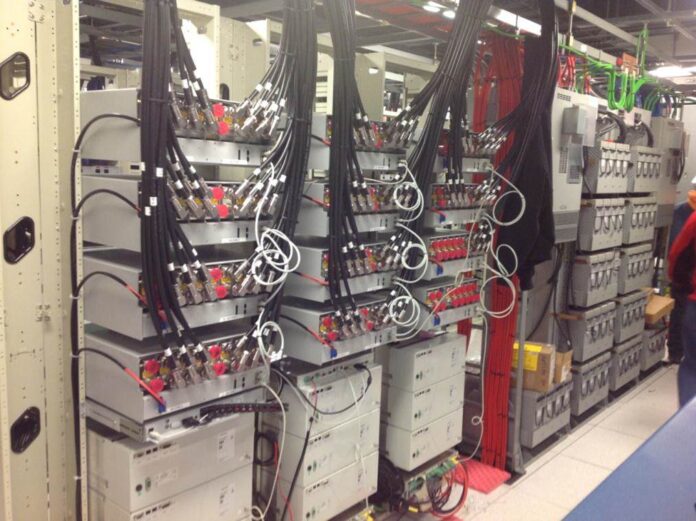Distributed antenna systems are increasingly common in large public venues, and many locations are already upgrading or replacing their original systems. To control costs, carriers and neutral host DAS providers are looking at ways to reduce fiber, cable and power requirements. Below we outline three different approaches.
First, a review of the components of a DAS:
According to the HetNet Forum, formerly the DAS Forum, a distributed antenna system has three primary components:
• A number of remote communications nodes, each including at least one antenna for the transmission and reception of a wireless service provider’s RF signals;
• A high-capacity signal transport medium (typically fiber optic cable) connecting each DAS node back to a central communications hub site; and
• Radio transceivers or other head-end equipment located at the hub site that propagates and/or converts, processes or controls the communications signals transmitted and received through the DAS nodes.
Streamlining DAS:
Common public radio interface
AT&T is encouraging equipment vendors to integrate the CPRI standard into their DAS solutions. CPRI is a cooperation among five companies: Ericsson, Huawei, NEC, Nokia Networks and Alcatel-Lucent. The CPRI initiative is meant to be a complement to current activities in formal standards organizations such as 3GPP and 3GPP2.
The CPRI specification calls for a digitized and serial internal base station interface between radio equipment and radio equipment control. User plane data, control plane transport mechanisms and means for synchronisation are included in the specification.
AT&T’s Paula Doublin, AVP in the carrier’s antenna solutions group, said the carrier has several trial deployments of DAS/CPRI architecture implemented today. She said that CPRI offers the following advantages:
1) Alleviates the need for radio units
2) Alleviates the need for RF attenuation/interface panels
3) Alleviates the need for large numbers of coax runs
4) Creates a direct interface of RF Baseband Units (eNodeB) blades with DAS gear
5) Simplifies installation
6) Reduces the DAS footprint
TE Connectivity, which is in the process of selling its wireless business to CommScope, has been a leader in adopting CPRI specifications for its DAS solutions. It establishes a direct digital connection between Alcatel-Lucent base stations and TE’s DAS host unit.
Digital distribution
Dali Wireless claims its all-digital solution reduces operators’ total cost of ownership with patented digital signal processing technology. The goal is to enable operators to allocate capacity in real-time as demands on the network change.
The solution has been deployed at the 800,000-square-foot Los Angeles Airport Hilton. The DAS supports the 700, 850, 1900 and 2100MHz bands over a single fiber, providing support for multiple operators.
Centralized head-end
DAS providers said that solutions do not need to be digital to be efficient. JMA Wireless offers a centralized DAS that allows operators to keep the BTS equipment at a central location while delivering DAS services to a remote location over a single fiber. Venues need less real estate for their DAS on premises and when multiple operators wish to service a venue, each can maintain their own centralized head-end location while converging the DAS service at the venue.
JMA Wireless reports that in one stadium its solution reduced the DAS footprint by 85%, while in another a centralized head-end provided DAS service to 7 different hotels within a metropolitan area.
Image source: AT&T
For more on Investing in Hetnets, watch the on-demand RCR Wireless News webinar and download the free feature report.

